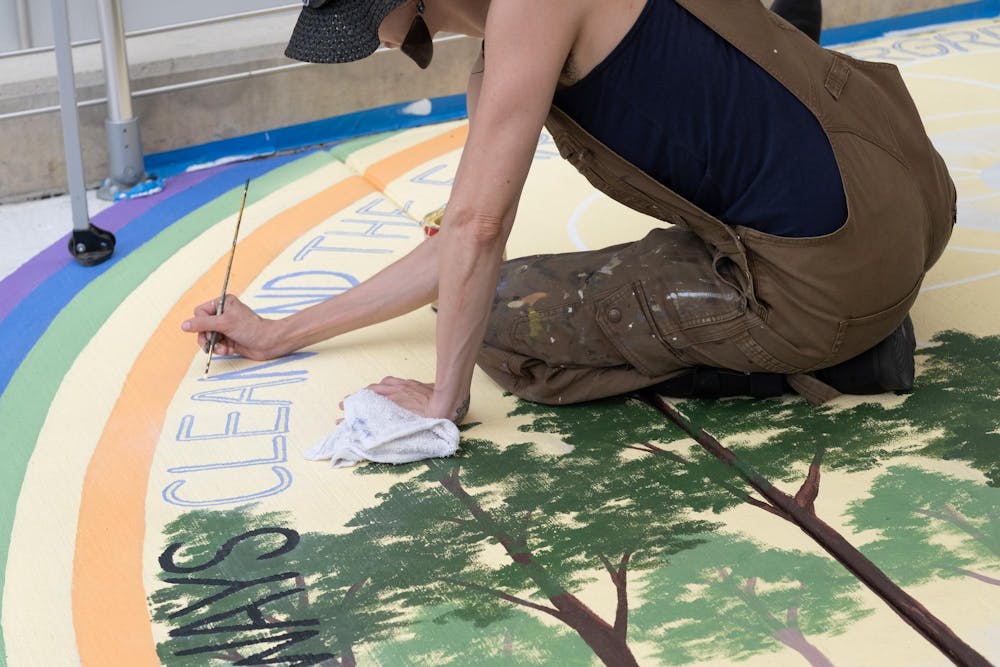At the end of June, visual artist and visionary painter Molly Chopin perched under a tarp, rain trickling down the sidewalk as she brushed paint onto the pavement. Slowly but surely, small splotches of color transformed into a landscape of longleaf pines and swirling water, all centered around a single storm drain.
At the top of her mural were the words, “Keep our waterways clean and the earth evergreen,” a memo she selected to demonstrate the importance of keeping trash out of storm drains, which all lead to nearby creeks and eventually, Jordan Lake — a huge sourcing of drinking water for those in the Triangle.
Chopin’s art, alongside many other storm drain murals throughout Chapel Hill, was commissioned by the Town of Chapel Hill as a part of the Storm Drain Murals project, which started in 2022 as a collaboration between the Community Arts and Culture division and Stormwater Management. Since then, 11 artists have created unique public art, from a tangled, colorful pipe mural to various landscapes of the distinct N.C. deciduous forests. Chopin’s mural on Rosemary Street is the most recent addition.
About 1 million residents in the surrounding area get their drinking water from Jordan Lake. According to the Global Atlas of Environmental Justice, point source pollution has remained a huge problem for Jordan Lake since the 1960s, where the Triangle has continued to see drastic population increases that has left treatment infrastructure unable to keep up with the pace.
Chopin’s piece resonates with both the aim of the project — to educate people about storm drains and their direct connection to local waterways — and with her own beliefs about nature and people, she said.

“I create a lot of art that is intended to remind people of the spiritual nature of existence, so a lot of my work does involve landscapes, elements of nature and trying to put face to unseen energies as well as to render that which is seen,” she said. “And to create imagery to remind people of that interconnectedness between the two.”
Nature shows up in much of Chopin’s work, she said, including what she refers to as a “system of symbiosis,” where multiple systems — both man-made and naturally occurring — feed into one another.
Chopin’s painting includes both a landscape of longleaf pines and a rainbow, which Chopin also uses in much of her work, as well as a spiraling, geometric figure. This figure is known as the “seed of life,” which spiritually represents creation and the origin of all energy, she said, and is represented in numerous cultures.




